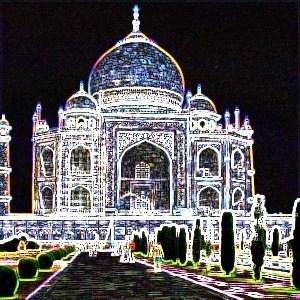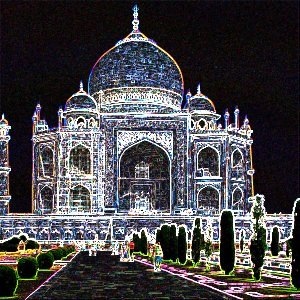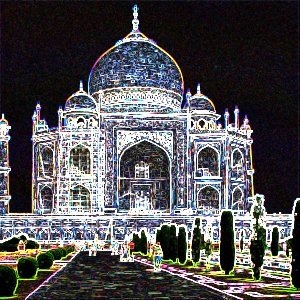| 7.3. Edge | ||
|---|---|---|

|
7. Filtre for kantdetektering |  |
Figur 17.140. Applying example for the Edge filter

Original image

After applying the filter (Sobel option)
Figur 17.141. Applying examples for the Edge filter

After applying the filter (Prewitt compass option)

After applying the filter (Gradient option)
Figur 17.142. Applying example for the Edge filter

After applying the filter (Roberts option)

After applying the filter (Differential option)
Edge detector offers several detection methods:
Here, this method has no options and so is less interesting than the specific Sobel.
Result doesn't look different from Sobel.
Edges are thinner, less contrasted and more blurred than Sobel.
No evident difference from Sobel.
Edges less bright.
Less interesting than the specific one.
A low value results in black, high-contrasted image with thin edges. A high value results in thick edges with low contrast and many colors in dark areas.
Where the edge detector will get adjoining pixels for its calculations when it is working on the image boundaries. This option will only have an effect on the boundaries of the result (if any). Smear is the default and the best choice.